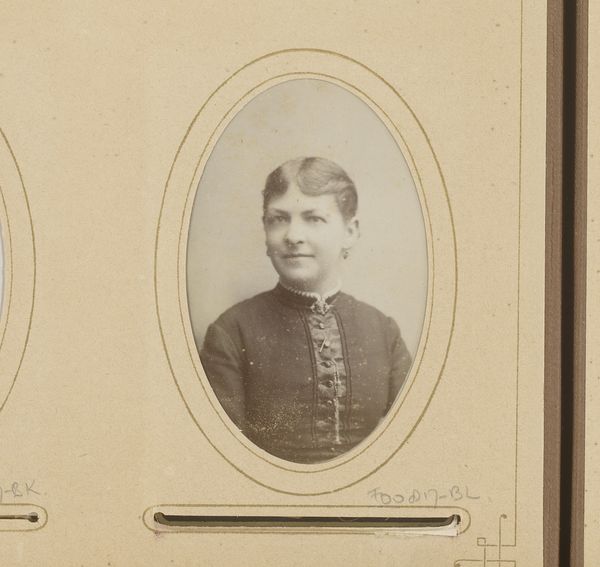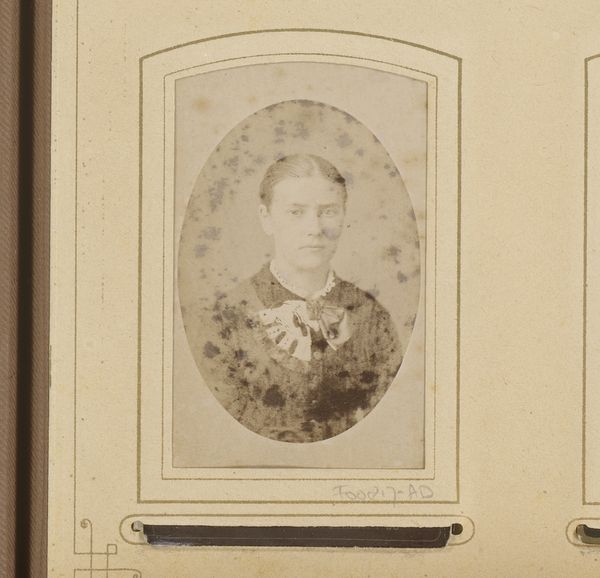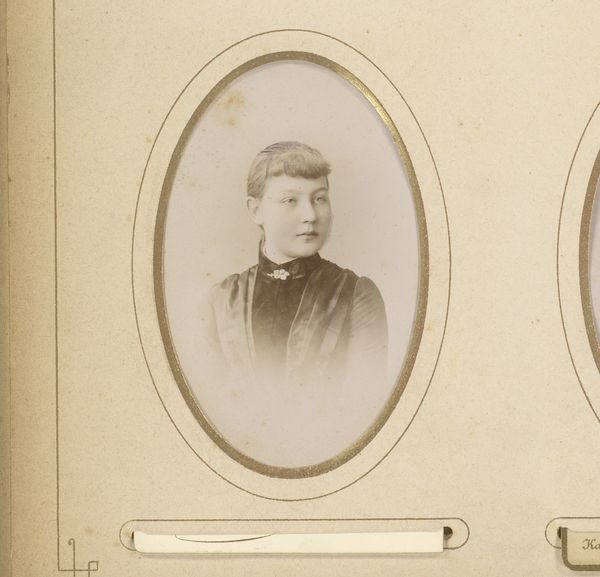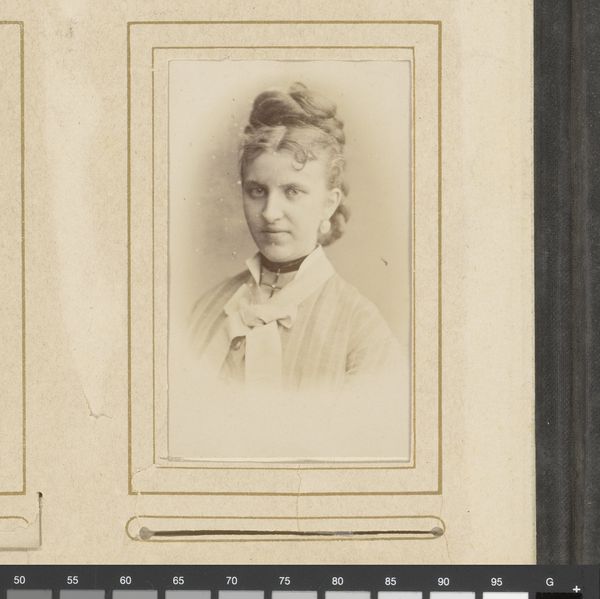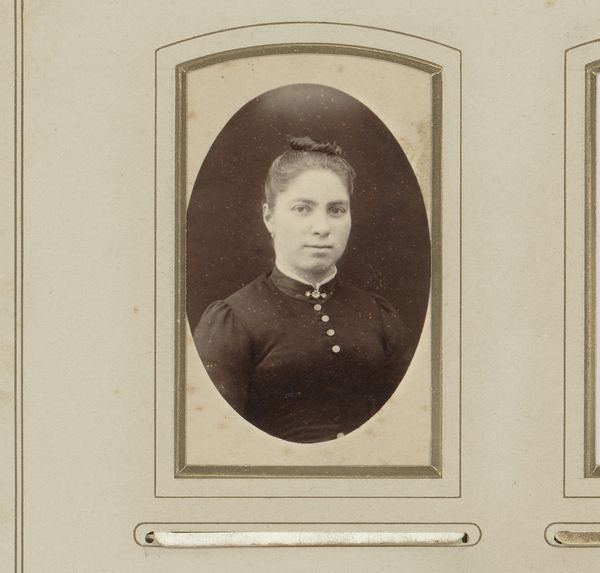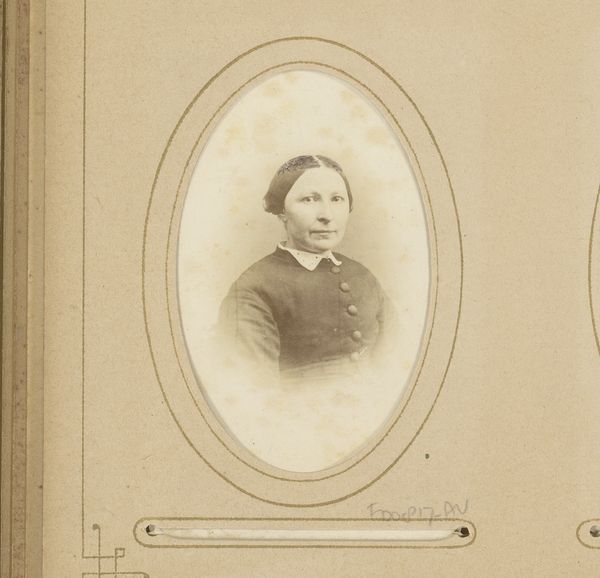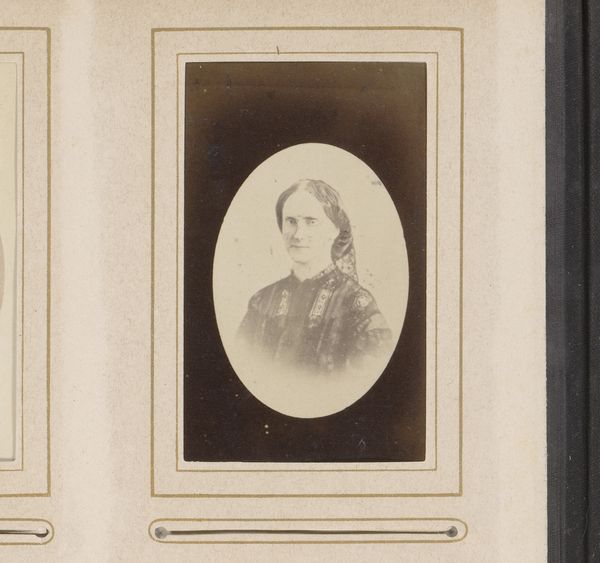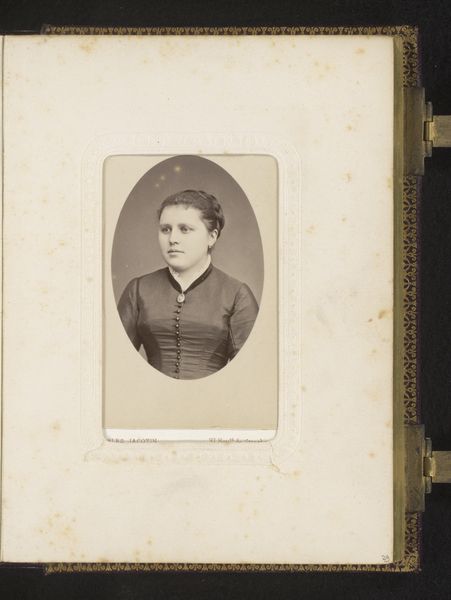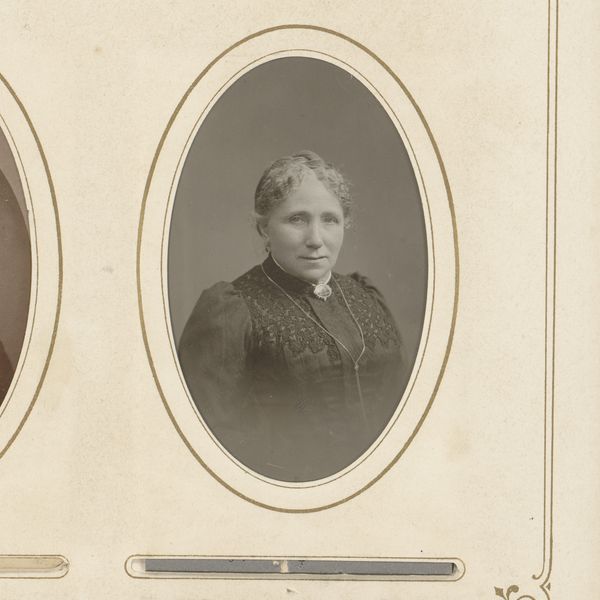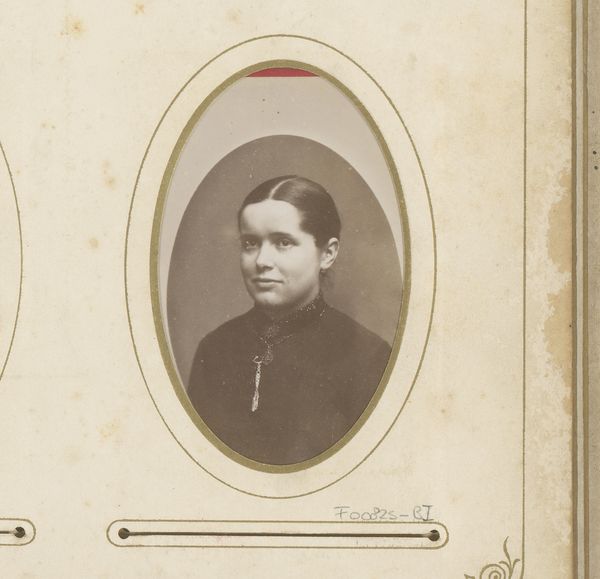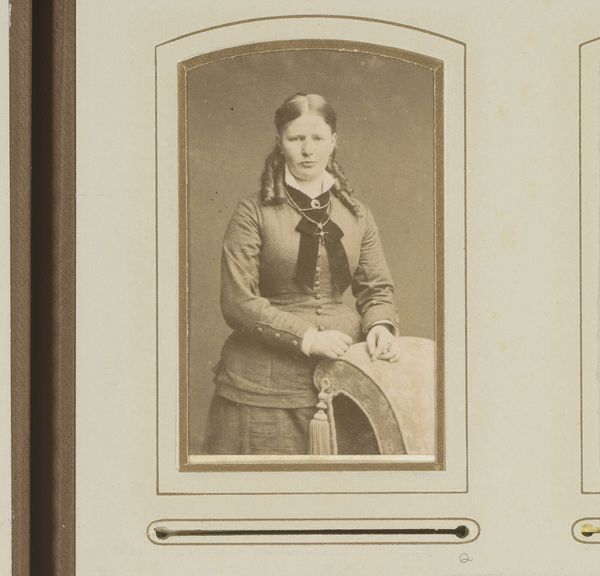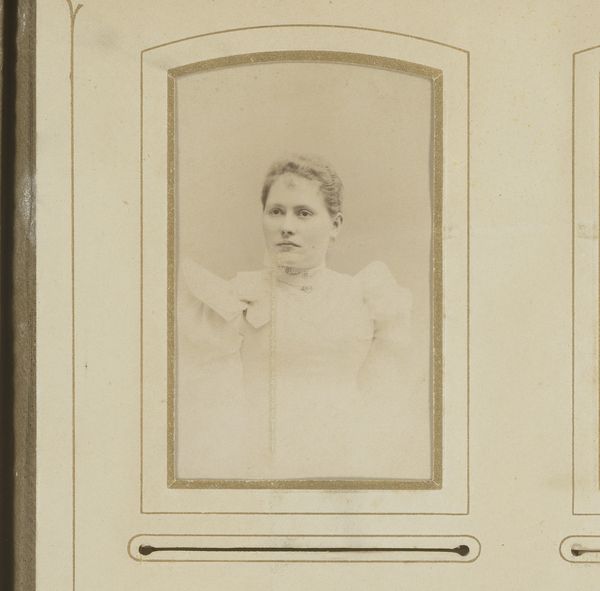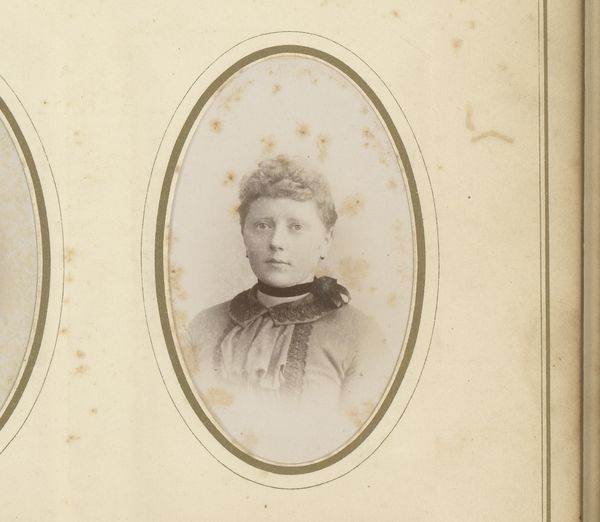
Dimensions: height 82 mm, width 53 mm
Copyright: Rijks Museum: Open Domain
Curator: Here in gallery 12 is a remarkable gelatin silver print, "Portret van een jonge vrouw," attributed to Cornelis Bernardus Broersma, dating sometime between 1874 and 1900. Editor: It’s striking, isn’t it? Her gaze is so direct, yet there’s a vulnerability there too. The oval frame gives it such a classic, almost romantic feel, but something about her clothing feels quite reserved. Curator: Precisely. Photography in this period became increasingly accessible to the middle class. Portraits were important markers of social status and identity, yet we have no idea about the sitter here. The Romanticism is definitely there, but within the strict conventions of bourgeois portraiture. Editor: I think of what it might mean to be a young woman at this historical juncture. Caught between tradition and new freedoms, maybe forced to perform a version of femininity that constricts. I find it compelling to imagine all of the unspoken narratives within that frame. What does that particular pose convey about the power dynamics at play? Curator: The setting suggests a professional photography studio in Leeuwarden, Netherlands. Broersma ran a photography studio, contributing to this shift to making photographic portraits widely accessible, not only a preserve of the rich. Think of the layers here: a woman's presentation of self and its distribution, within the confines of a specific era. Editor: Right, who was commissioning these images? Was this image for a suitor, a family member? Who gets to see and control that image then? This seemingly simple photograph raises important questions about gender and the performance of self. Curator: We should remember this image is part of an album, she is only one of a group of subjects, forming an alternative collection to the typical high art that defines so many museum spaces. Editor: That makes it even more significant. It encourages us to reflect not only on the woman within the oval, but also on the socio-cultural contexts shaping her portrayal. Curator: Exactly, it humanizes her outside of any individual artistic identity. It represents both historical constraints and untold possibilities for that young woman and countless others. Editor: I’ll leave with that sentiment. The image, now, is a portal of questioning on the visual regimes governing women then, while echoing to contemporary perspectives about performative presentation.
Comments
No comments
Be the first to comment and join the conversation on the ultimate creative platform.
